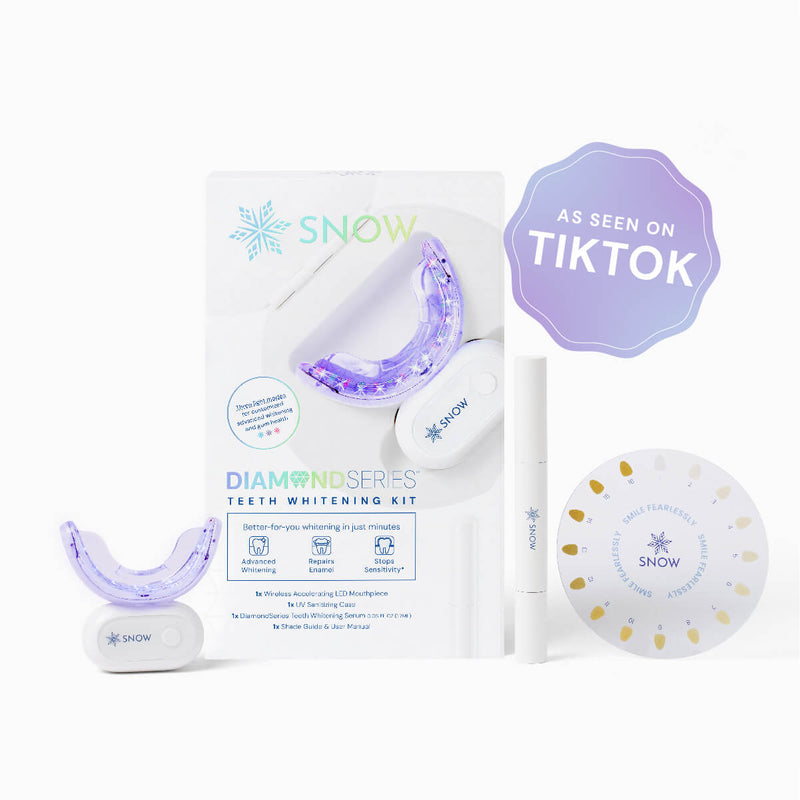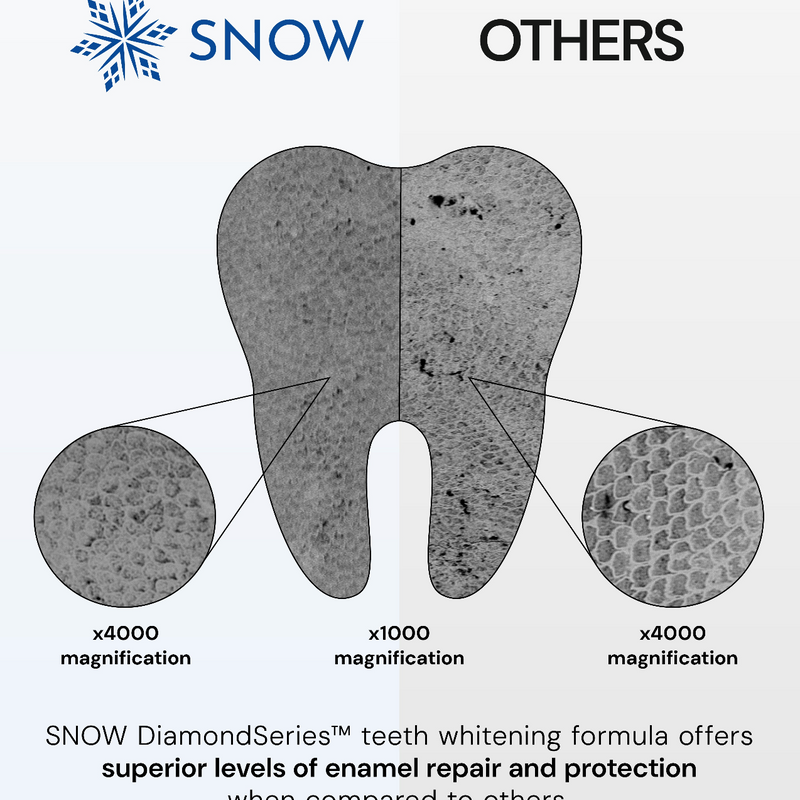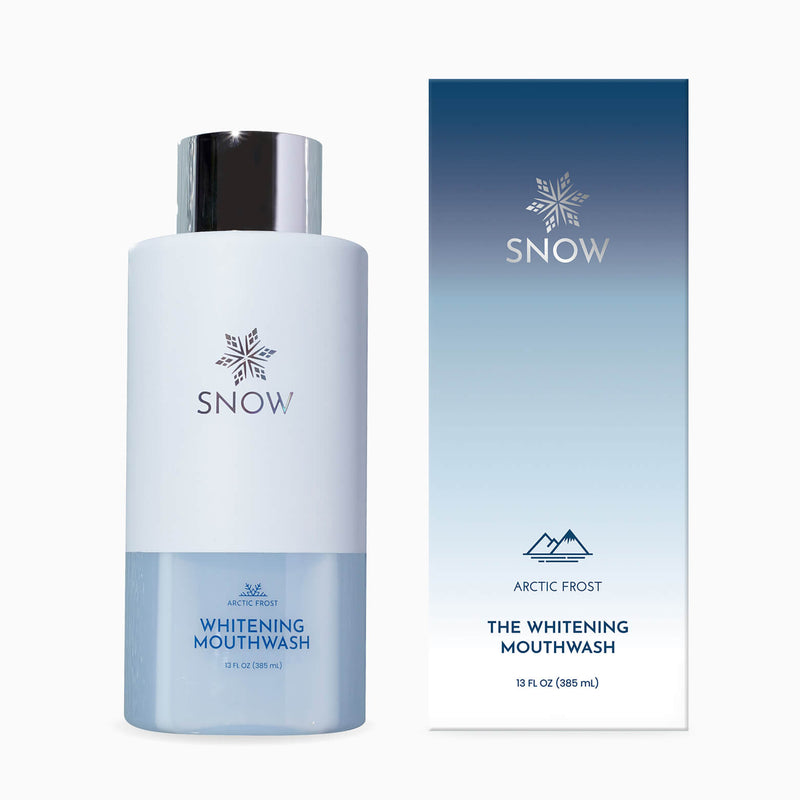I love apples.
Let me rephrase that. I love a good, crisp apple that is the perfect balance of tart and sweet. Honeycrisp apples are at the top of my list.
Ohmygoodness. The outside is red with a bit of gold. It’s firm. It looks perfect.

My mouth is watering right now just thinking about one. I can hear the crunch and practically taste it. Sooo good.
That’s why it is horribly disappointing when the outside of the apple looks so delicious, the skin is firm … And you bite into it finding a rotten center.
What?!!
Curses. That darn brown spot is rotting my apple and I didn’t even know it. It’s soft. It’s mushy. It is … ewww.
When you think of a rotten apple, a brown mushy apple comes to mind. So you see, apples can look just fine on the outside and deceive the ever-loving daylights out of you.
And you know what? Teeth can be just like that.
We think that tooth decay means brown, crust-looking teeth like we see on TV in the paupers and beggars that are portrayed. We picture smiles with missing teeth and stumpy half-teeth.
Nope. Your smile can look great … Meanwhile, five cavities have eaten through the exterior enamel and are working their way to the inside. (True story. Just ask my twelve year old. No amount of novocaine can erase that memory.)
For the love of Pete, how does that happen?!
First you need to wrap your mind around what constitutes tooth decay. It isn’t all about a mouth full of brown and black teeth.
Tooth Decay
Simply put, tooth decay is the destruction of the tooth’s enamel. Your enamel is basically the superhero of your teeth and gums. It stands guard, preventing bacteria from damaging the inner layer of the tooth, traveling to the gums, and in some cases throughout the body.
Damaged enamel is a big deal.
Although it sounds like tooth decay can be sneaky, regular trips to the dentist doesn’t allow for much sneakiness. Dentists know exactly what to look for:
- They examine your entire mouth and teeth.
- They use that tiny sickle probe. (Y’all. That is a terrible name. No wonder people need sedation.)
- They ask about any pain or sensitivity you may have in your teeth.
- They look at x-rays of your teeth that reveal the depth of damage occurring in your mouth.
- They determine if you have root cavities, smooth surface cavities, or pit and fissure cavities.
Now obviously, you can look in your own mouth. If you have a black hole in your tooth, umm … Yeah. You probably have a wee bit of tooth decay.
There are several things you can look for on your own that may be indicative of some unfortunate tooth decay. They’re basically the same things a dentist will be noticing, sensitive teeth, painful teeth, black stains, a hole in your tooth, and the less obvious—white stains on your teeth. White stains? Yep.
What Causes Tooth Decay?
Plaque wears the badge of dishonor when it comes to most tooth decay. It is sticky and it attaches itself to the teeth.
Plaque forms because of bacteria that sits unattended in the mouth. It’s comprised of food particles, bacteria, acid, and saliva.
Bacteria can be found in every person’s mouth. It lurks there after drinking or eating anything with sugar. Keep in mind that even starchy foods turn into sugar. As it sits there, that sugar turns into acid.
This plaque consists of the acidic bacteria and it will form on your teeth and cling to them shortly after putting anything containing sugar into your mouth. As it clings to the teeth, it is eroding the enamel.
When the enamel is eroded, tooth decay follows.
Anybody with teeth is susceptible to cavities. There are things that make people more likely to find themselves with tooth decay:
- Ingesting and excessive amount of sugary or acidic drinks and foods
- Dry mouth
- Anorexia and bulimia
- Acid reflux
- Lack of fluoride
- Failing to perform a proper oral hygiene routine
You may have noticed that tooth decay happens more frequently in the molars. The bite surface of our teeth has a bunch of grooves that serve as the perfect place for food particles to hide.
The back teeth are harder to floss and brush. If you fail to put the effort into flossing and brushing those teeth, you are putting yourself at risk of tooth decay.
Treatment Options for Tooth Decay
Now that you know what tooth decay is and how it is caused, it’s time to get down to the nitty gritty. Let’s talk tooth decay treatment options.
I think it’s safe to say that our first thoughts for tooth decay are filled with numbing shots, drills, and numb mouths.
Like that one time in first grade, wearing your long-sleeved, cream-colored button down shirt with ruffles and a soft teal green skirt with your stylish slip-on shoes. You went to the dentist and found out you had your first cavity.
The blonde lady in her white uniform read you a story about runaway pancakes as the dentist poked around in your mouth while fixing your stupid cavity.
Then your mother sent you to school with your Strawberry Shortcake lunchbox. You sat down for lunch with the chicken noodle soup because soup is what you eat when you have a stupid filling.
Soup also runs right out of your mouth in front of your classmates because not only are your gums numb, but also your lips!
Good times.
Not that I remember my first cavity with utter fondness, or anything.
That brings me back to the discussion of the day, the treatment options.
- Fillings: Another name for fillings is restorations. They are the typical treatment option when decay has eroded past the enamel.
Fillings can be devised of resin, porcelain, or dental amalgam.
- Root Canal: This is about as fun as it sounds. A root canal may be necessary if the cavity has made its destructive path all the way to the pulp.
The pulp itself will be replaced by a filling. So a filling goes inside of your tooth. Fun.
- Crowns: No, this is not a pretty thing filled with jewels and worn on your head. A dental crown fits over the entire tooth in an effort to save the damaged tooth.
After your dentist drills away all of the damaged parts of your tooth, he then puts a cap over it that is often made of porcelain, resin, or gold.
- Extraction: Yep. The dentist can just yank that sucker out. (I think that’s the technical term for it.) Seriously, it’s exactly what it sounds like—a dentist pulls your sickly tooth out.
- Fluoride: Yes, please. Let’s just put some fluoride on my tooth and fix it like that.
This is obviously the least invasive option. It does have a tendency to shoot pain through your tooth because you're putting the fluoride onto an exposed surface of the tooth.
The type of treatment you receive will be determined by your dentist. Clearly, you need to actually go to the dentist in order for that to happen! Regular semi-annual visits to the dentist will help to catch tooth decay before it progresses to the extreme of requiring extraction.
At-Home Treatment Options
Many people would prefer to treat their tooth decay from their home with more natural means. There is absolutely nothing wrong with avoiding chemicals.
There are several resources available online that have been put together by laypeople as well as doctors who wanted to heal their teeth on their own.
Vitamin D
The idea that vitamin D affects tooth decay is not new. It was first suggested in the 1930s that a lack of vitamin D contributes to the formation of cavities.
It has continued to prove true that children and adults who add vitamin D to their daily routine have less cavities. Vitamin D is a big key to absorbing calcium and phosphate from our diets.
Our teeth need calcium and phosphate to maintain the integrity of the enamel. Without plenty of vitamin D, our teeth cannot remineralize themselves properly.
Oil Pulling
Many people have reported great results for treating their cavities by oil pulling every day. It has to do with pulling toxins from the body. I think we can agree that nasty bacteria is toxic.
Oil pulling is simple. First thing in the morning before eating, you pop a cheek full of sesame or coconut oil into your mouth and swish it around your mouth for twenty minutes.
Read a book, get dressed, write in your journal, fix breakfast, but do not attempt exercise. I’m serious. You’ll swallow it. Kinda defeats the purpose of removing toxins when you swallow them down.
Oil of Oregano
Oregano Oil is well known among essential oil users as a powerful tool in fighting infection because of its antibacterial, antiseptic, antimicrobial, and anti-fungal properties.
It must be used sparingly because it is extremely potent. Put one tiny drop on your toothbrush with your toothpaste and brush those bacteria killing properties right into your teeth.
Neem Bark
Neem oil has been known for years as a treatment for oral infections, bleeding gums, inflamed gums, and—drum roll, please—tooth decay. Chewing on neem sticks, leaves, or seeds lays waste to the perils of nasty bacteria.
So, pretend you’re in beautiful India wandering the desert and chew on some native Neem sticks for the health of your mouth.
Licorice Root
First of all, don’t get excited and think you can go grab a Red Vine and chew to your heart’s content. This is licorice root, not licorice candy.
Licorice root has built-in antimicrobial properties that prevent cavity-causing bacteria from forming. You can actually find a licorice root lollipop that helps fight cavities. Win-win!
Natural Probiotics
Bacteria goes unchecked often because we can’t see it. It hides between our teeth and in the grooves of our teeth.
Eating foods with naturally-occurring probiotics neutralizes the acidic pH. Kombucha, kefir, sauerkraut, and kimchi all encourage the growth of good bacteria that fight off plaque bacteria and cavities.
Prevention of Tooth Decay
You can treat cavities at the dentist or in your home, and hopefully you can rid yourself of them. But. It would probably be better to prevent them from happening, right?
So what can you do on a regular basis to prevent cavities from forming?

- Eat the rainbow. This means you need to eat a well-balanced diet that is rich in vitamins and minerals so your teeth can remineralize properly.
- Avoid grains. Grains stick to the teeth and turn into sugars, and that is a recipe for plaque-forming bacteria.
- Reduce your sugar intake. Sugar in the mouth creates the perfect environment for cavities to form.
- Chew sugar-free gum with xylitol. Xylitol increases the flow of saliva. Saliva helps to wash away the bacteria and keep it from sticking to your teeth.
- Drink plenty of water. A dry mouth is a mouth ripe for bacteria growth. Water keeps you hydrated and washes away food particles and the potential ingredients for plaque.
- PERFORM AN EFFECTIVE ORAL HYGIENE ROUTINE. Yes, I am shouting at you. This is an absolute must. It is non-negotiable in the fight against tooth decay.
Floss, brush, rinse. Preferably twice a day. In that order.
Take care of your teeth. Even if you hate to floss, do it. It’s the only way to keep bacteria from sticking in between your teeth. Your hygienist cannot undo months and months of neglect.
Take care of your body. Your teeth are affected by your overall health. Drinking water, taking vitamin D, and eating a variety of fruits,vegetables, dairy, and protein are all necessary for maintaining your body’s health.
Seriously. Nobody wants to drool soup in front of your peers. That’s a hard pass.



























